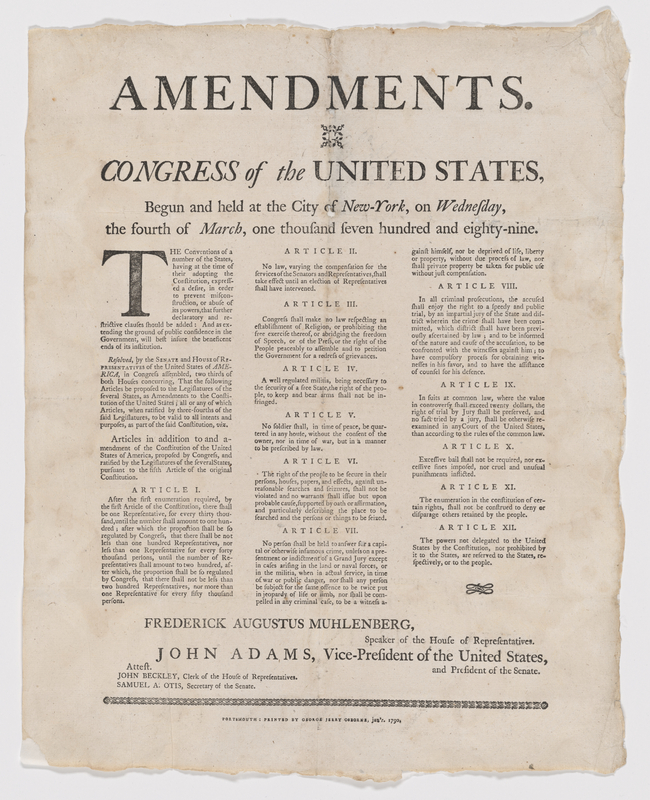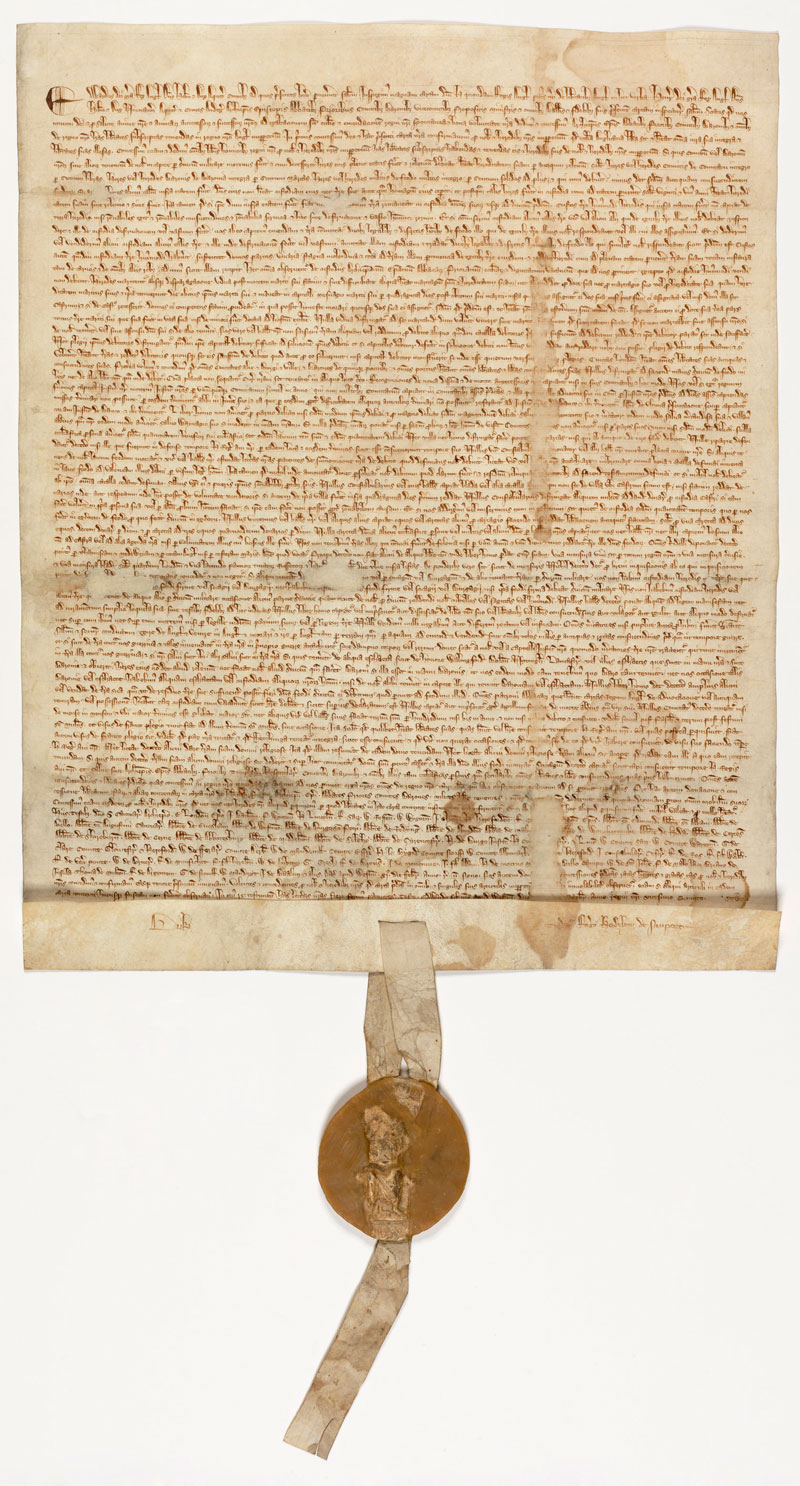
Records of Rights: A Permanent Exhibition in the David M. Rubenstein Gallery
In “Records of Rights,” explore how generations of Americans sought to fulfill the promise of the founding documents. The David M. Rubenstein Gallery exhibition showcases original and facsimile National Archives documents and uses an innovative 17-foot-long touch-screen interactive table to illustrate how Americans have debated about and fought for rights like free speech, religion, and equality.
Preview some of the featured documents in the "Records of Rights" Online Exhibit.
Magna Carta
Begin your exploration of "Records of Rights" by viewing an original 1297 Magna Carta, on display courtesy of David M. Rubenstein.
Landmark Document

On loan courtesy of David M. Rubenstein
As you continue your journey through the "Records of Rights" exhibition, stop at the Landmark Document exhibition case, which features a 1790 broadside copy of the Bill of Rights. This broadside copy of the joint resolution proposing 12 amendments to the Constitution was published in New Hampshire, the fifth state to ratify the Bill of Rights on January 25, 1790. Virginia took the total over the three-fourths threshold with its ratification on December 15, 1791. Ten of the 12 proposed amendments were then appended to the Constitution.


